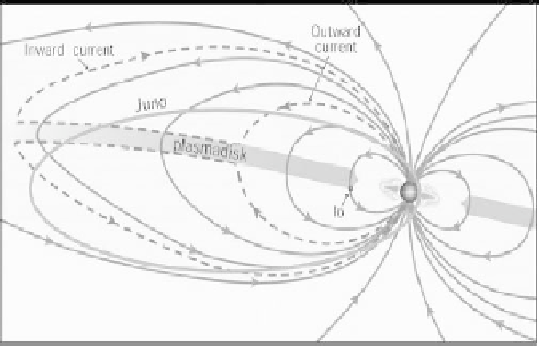Geoscience Reference
In-Depth Information
Fig. 3. A sketch of the mission profile of the JUNO Jupiter polar orbiter.
Courtesy
:Jet
Propulsion Laboratory, NASA, and Southwest Research Institute.
done is probably the sounding of the deep atmosphere by microwave spec-
trometer as in the case of the JUNO project. This instrument will probe
the temporal and spatial variations of the water and ammonia distributions
and hence is the key to our understanding of the convection process and
wind profiles in different regions of Saturn's atmosphere. This knowledge
will in turn lead to improved understanding of the internal structure of
this second largest gas planet. A comparison of the SAPPORO and JUNO
measurements will be an important step for a comprehensive study of the
interiors of the many extra-solar planets of Jovian masses.
The Jovian dust ring is very tenuous, especially at the top of the upper
atmosphere. This is why the JUNO Orbiter can avoid dust impact by fol-
lowing trajectories as shown in Fig. 3. It is doubtful though whether such
a free-fly zone exists at Saturn because of the existence of the D ring. Ring
gaps such as the Cassini Division might not be completely empty of dust
impact hazard either. A JUNO-like orbital configuration might therefore,
not be viable for the SAPPORO mission. This could be a challenging fac-
tor in terms of gaining microwave remote-sensing data of sucient spatial
resolutions for a wide latitudinal range. It would be very useful to produce
a survey of the low-dust zones (if any) in the Saturnian ring system from
the Cassini mission with a view of designing a future polar grazing orbiter
mission. If this could not be done, we would need to consider the sounding
of the low-latitudinal region by having the SAPPORO Orbiter skimming









